THE MADNESS OF MOTOGP
It is being said by some that MotoGP is in crisis. Now what is going on seems to be bordering on the farcical. Crisis or farce - which is worse?
For some time now a huge argument has been brewing between the promoters, Dorna, and the Japanese manufacturers. It has been caused by the increasing costs of competing reducing the grid to less than 20 bikes; the dullness of the racing, it is already a two-horse race this year; and concern by the owners, financial investment company Bridgepoint, that the huge profit they expect to make when they sell it is being threatened.
The promoters and owners want to fix this by adopting a low(er) cost formula - the CRT machines are glorified versions of World Superbikes - which they believe will fill the grid and, by having a fairly rigid formula, will also level the playing field. The manufactures, where engineers rather than marketeers dominate, don't like this idea at all.
So what has been a cosy four-way relationship between the FIM, the sports' governing body; Dorna, who own the commercial rights; IRTA, the international racing teams association representing teams and riders; and the MSMA, the motorcycle sports manufacturers association is now racked by tension and argument as to where the sport goes.
Crisis is not too strong a term but now we have farce. In order, we can only imagine, to up the ante the Vice President of Honda racing Shuhei Nakamoto has offered to fill the grid by producing race replicas of its RCV racers for a million quid each. As Honda already supply all the engines for Moto2 and bikes for Moto3 then it looks as though they want to take over the series.
The fact that they decided to go public on this proposal, using the venerable MCN as a mouthpiece, displays a degree of desperation and frustration on their part. Desperation because they are facing severe cuts in their budget and frustration because Honda believes it is not being heard, risking loss of face with its fellow manufacturers.
There is nothing to stop Honda making a batch of racers which, at €1m each, would be roughly the same as buying a CRT Aprillia and much cheaper than the leasing arrangements for the present private Honda teams. But the idea of one manufacturer dominating MotoGP to such an extent will be an anathema to the owners who, sometime next year or sooner, will want to sell to another owner. And while profits of the series, said to have almost doubled in the five years of ownership, are critical to the the selling price it is the entertainment value which drives growth in sponsorship and television rights.
COLLATERAL DAMAGE
The fist fight between Dorna and the manufacturers might normally have been a source of amusement for the brothers Flammini at the headquarters of World Superbikes near Rome Airport. Instead it will be a matter of concern because any changes to the MotoGP formula will have an effect on the rules for WSB.
Both series are owned by Bridgepoint, an investment company, but MotoGP is worth many times more than WSB and whatever it takes to increase that value will be done even, as appears to be the case, it strays into WSB territory.
And as spectator numbers and television audiences are also far greater then it is much more important to the manufacturers in terms of building their brands with events in far distant countries. Sales of sports bikes in Europe are not their top priority.
Negotiations between the two series, with their common owner, have already started. Not surprisingly the Flamminis are resistant to any suggestion that they should help their long standing rival by downgrading their formula to something resembling Superstock. But forgoing luxuries like traction control etc. doesn't seem to have harmed BSB one little bit.


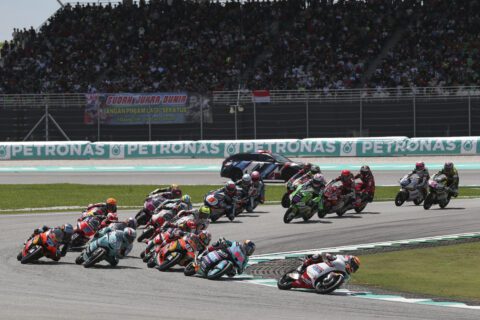
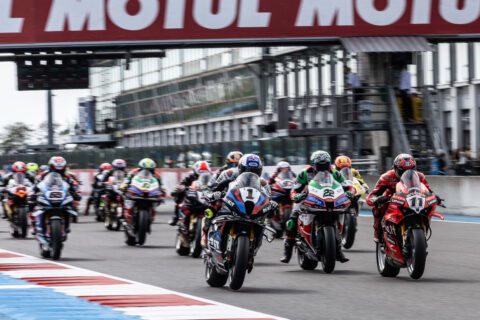
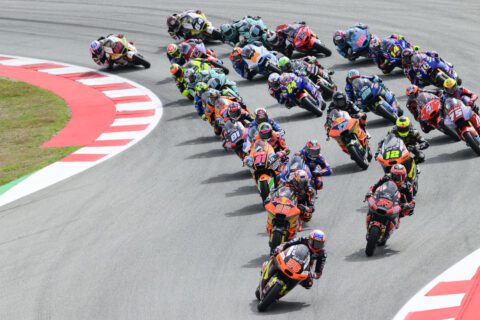
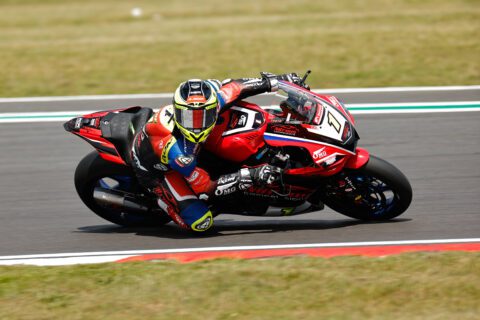
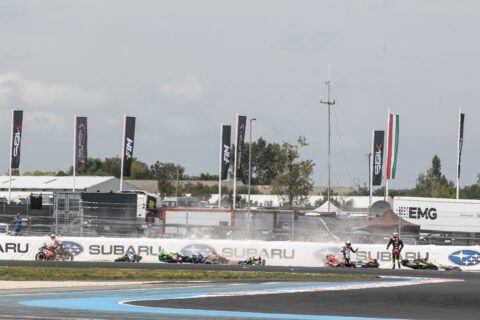
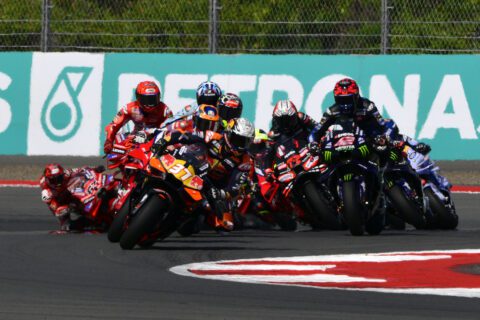
![Shane Byrne, Monstermob Ducati, 2003 WorldSBK, action [Gold & Goose]](https://bikesportnews.com/wp-content/uploads/2025/07/Shane-Byrne-Monstermob-Ducati-2003-WorldSBK-action-Gold-Goose-480x272.jpg)

